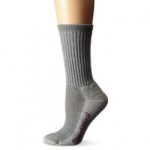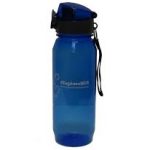Summit Night – From Head to Toe
This is when you’re ‘likely’ to want all your main layers, but do gauge the weather and conditions. Our guides will advise you. If it is very cold you will want to have your base (thermal) layer on top and bottom.
On top of your leggings you could wear 2 thin pairs of trousers or one thicker pair and a pair of waterproof trousers as your outer layer. Similarly on top you will want a number of thinner mid layers (long sleeve t’shirts / trek shirts, mid layer fleeces) and a thick fleece and waterproof on top for that or alternatively a down or synthetic fill jacket.
Then on your extremities gloves (inner and outer pair), balaclava if windy, warm hat / scarf and of course thick, warm, clean socks and your boots. Gaiters can also add heat.
Some people also take hand warmers and if very cold don’t forget to wiggle your toes as you walk to keep the blood pumping!
Manage Your Climate
The key to what to wear on Kilimanjaro is to manage your ‘own’ climate based on how ‘you’ feel and what the conditions around you are doing – everyone is different. You’ll find that as you walk (on any day of the trek) that you’ll warm up with exercise so it’s important that you regulate your temperature so that you’re not too hot or too cold.
The best way to do this is firstly ensure that you have on the right number of layers for the conditions. If not add or remove a layer so that you’re comfortable. When you walk you’ll get warm, so unzip your jacket and mid layer and let air circulate. Then when you stop for a break pull the zips up and keep the heat in. This is particularly important if it’s windy or if you’re in an exposed location.
Each night you’ll be briefed by your guide so that you can have the right gear ready for the next day and if you’re not sure, make sure you ask. It’s really easy to regulate your clothing to ensure you’re not too hot, nor too cold as long as you have what you need in your day bag.
HEADGEAR
UPPER BODY
LOWER BODY
HANDWEAR
FOOTWEAR
ON YOUR BACK
That’s it, that’s the secret to what to wear! There’s no hard and fast rules, just make sure you have what’s on the kit list and that’ll give you the flexibility to be adaptable to the conditions and most importantly dry and comfortable.












































